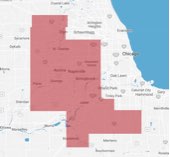How to Decipher Indoor Radon Levels and Your Risk Factor
Our world seems to have taken a page from the blockbuster series “Stranger Things.” Some days I feel like I’m living in the Underworld or the “Upside Down” as they would refer to it. In many of our lifetimes, we have yet to experience a “different” way of living day to day. Taken from a professional colleague of mine, I, too, refuse to call this the new “normal.”
With that said, we are all dealing with work from home, school from home, hybrid schedules, temporary schedules, and I can go on and on. The bottom line is —-we are home more than ever! As homeowners, it has created an acute awareness of many things seen and unseen around us, including our indoor air quality.
Normally, children would return to school in a more traditional sense (on campus/in buildings), and adults would work from their office locations. Today, most people are home most of the time.
With the fall season peeking around the corner, many of our outdoor activities will be replaced with indoor ones. The combination of all of these factors naturally increases our indoor radon exposure.
We’ve discussed in previous blog posts how the science works – but it never hurts to recap:
Overall, your exposure to radon gas is based on two principles:
- How much radon is in your home
- The amount of time you spend in your home
‘Acceptable’ Radon Levels For Your Home
We are all advised that our radon levels should be at the very least under 4 pCi/l. Data from the EPA is based on long-term exposure, AND what they refer to as a 70% exposure rate. This terminology refers to the “normal use” of a home.
Most people leave during the day to attend work or school, but we return home in the evenings to sleep at home nightly, and we come and go on the weekends. We are actually “home” on average 70% of the time in a normal week. The metrics of long-term exposure are all based on normal use of a home.
What we may have considered “acceptable” levels of radon indoors quickly become unacceptable! Throw the 70% factor out the window. Most of us are now home almost all of the time, so it is fair to use a 90% + factor. You may agree that a 3.0 pci/l radon level no longer works for you!!
Understand that having an active radon system in your home will absolutely reduce your radon levels, therefore reducing your exposure rate.
As always, we wish you well and we wish you safe. Have further questions? Let’s chat. Our office is OPEN!
Since 2008, we’ve been keeping homes in Oswego, Yorkville, Plainfield, Naperville, Aurora, Joliet, and Sugar Grove safe from the dangers of radon gas. Our team is ready to help keep your air clean!
Back To Blog






